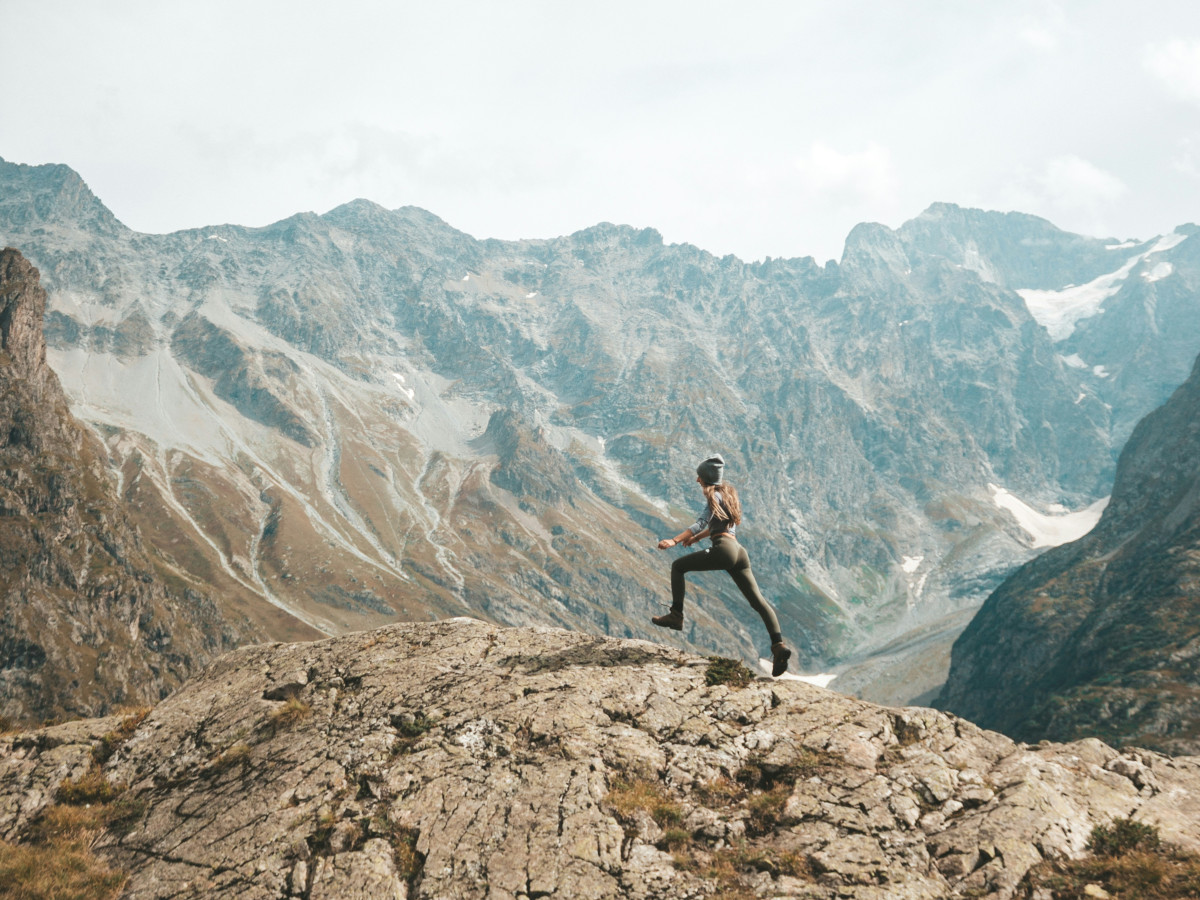The science behind trail running: How the right gear boosts your performance

When you take on the winding trails and rugged terrain that define trail running, you're not only challenging your endurance and determination, you're also testing the science behind every step, leap and stride. For trail running enthusiasts in Spain and around the world, understanding how the right equipment, especially shoes, can boost your performance is crucial.
In this journey through the scientific fundamentals of trail running, we will discover how choosing your footwear wisely can make all the difference.
We will explore the biomechanics of running, the vital importance of selecting the right shoes, and how the right product is designed with these scientific elements in mind, delivering an optimised running experience.
Understanding the biomechanics of trail running
Trail running is a complex dance between body and ground, where every touch counts. Biomechanics, the study of how the human body moves under different conditions, is fundamental here. When running on trails, your body faces a variety of forces and challenges, from shock absorption to maintaining balance on uneven terrain.
Uneven surfaces, inclines and weather conditions affect the way our bodies react and adapt to running. Biomechanics plays a key role in this process, studying how external forces, such as terrain, impact on the body's movement.
- Biomechanics and shoes: Trail running shoes must offer support, traction and protection to handle these external forces effectively. Inadequate footwear can lead to misalignment, increasing the risk of injury.
Are the adidas terrex for me, or should I go for the Nike Pegasus Trail? Nike discount code 25% less.
The choice of footwear: more than just size and colour
Choosing the right shoes is crucial for any runner, but even more so in trail running. Trail running shoes excel in this respect, designed with sports science in mind.
Key features for trail running:
- Traction: Adapted for grip on varied terrain.
- Support: Stability on uneven surfaces.
- Protection: Resistant materials to protect against rocks and roots.
These features not only prevent injuries, but also improve the runner's efficiency, allowing for a safer and more enjoyable experience.
Preventing injuries and improving efficiency in trail running
In the heart of trail running, where each trail offers its own set of challenges and rewards, choosing the right footwear becomes the cornerstone of a safe and satisfying experience. Injuries not only halt our progress, but can also keep us off the trails we love so much. Here, we explore how smart shoe design is specifically geared to minimise the negative impact of varied terrain on our bodies, allowing us to run further, faster and more safely.
The science behind injury prevention
Injuries in trail running often arise from two main sources: improper technique and inappropriate equipment. Ankle sprains, tendonitis and stress fractures are unfortunately all too common. However, much of this risk can be mitigated through the selection of footwear designed with a thorough understanding of the biomechanics of the mountain runner.
- Shock absorption: Trail running shoes must offer superior shock absorption to handle the constant pounding against hard and rocky surfaces. This decreases the load on our joints and soft tissues, reducing the risk of impact injuries.
- Support: Proper support, especially around the ankle and arch, helps maintain proper alignment of the foot and leg, preventing sprains and ligament injuries.
- Protection: Tough materials protect against abrasions and bruises when hitting rocks and roots, an essential feature on technical trails.
Adaptation to the terrain: key to efficiency
Adaptability to the varied terrain of trail running is perhaps where the design really shines. This adaptability is not only crucial for injury prevention, but also for improving running efficiency.
- Traction versatility: The outsole of these shoes is designed to offer grip on a multitude of surfaces, from mud to rock to dry sand. This not only prevents slips and falls, but also allows runners to maintain a steady pace, reducing energy expenditure by minimising the need for constant speed adjustments.
- Dynamic response: The shoe's ability to respond dynamically to different types of impact means that runners can maintain a more consistent and efficient technique, regardless of the unevenness of the terrain. This optimises running economy, allowing athletes to run longer and with less effort.
- Extended comfort: Comfort is a critical component of efficiency. Footwear that keeps feet comfortable and free of pain or discomfort allows runners to concentrate on their technique and enjoy the run more, rather than being distracted by pressure points or discomfort.
Science at the service of your passion
Trail running is more than a sport; it is a passion that connects us with nature and challenges us to push our limits. Choosing the right equipment, based on an understanding of the science behind the sport, is fundamental to enjoying every run, minimising the risk of injury and improving our performance. Technology and design can be allied with biomechanics to provide an optimal solution for mountain runners.
By immersing ourselves in the scientific aspects of trail running and choosing equipment designed with these principles in mind, we are not only taking care of our bodies, but also enhancing our running experience in the beautiful landscapes of the Pyrenees and beyond.
Remember: Next time you're preparing for a trail running adventure, consider not only the distance and scenery, but also the science behind your equipment. Your body and your performance will thank you.
Don't miss any adventure in the Pyrenees!
